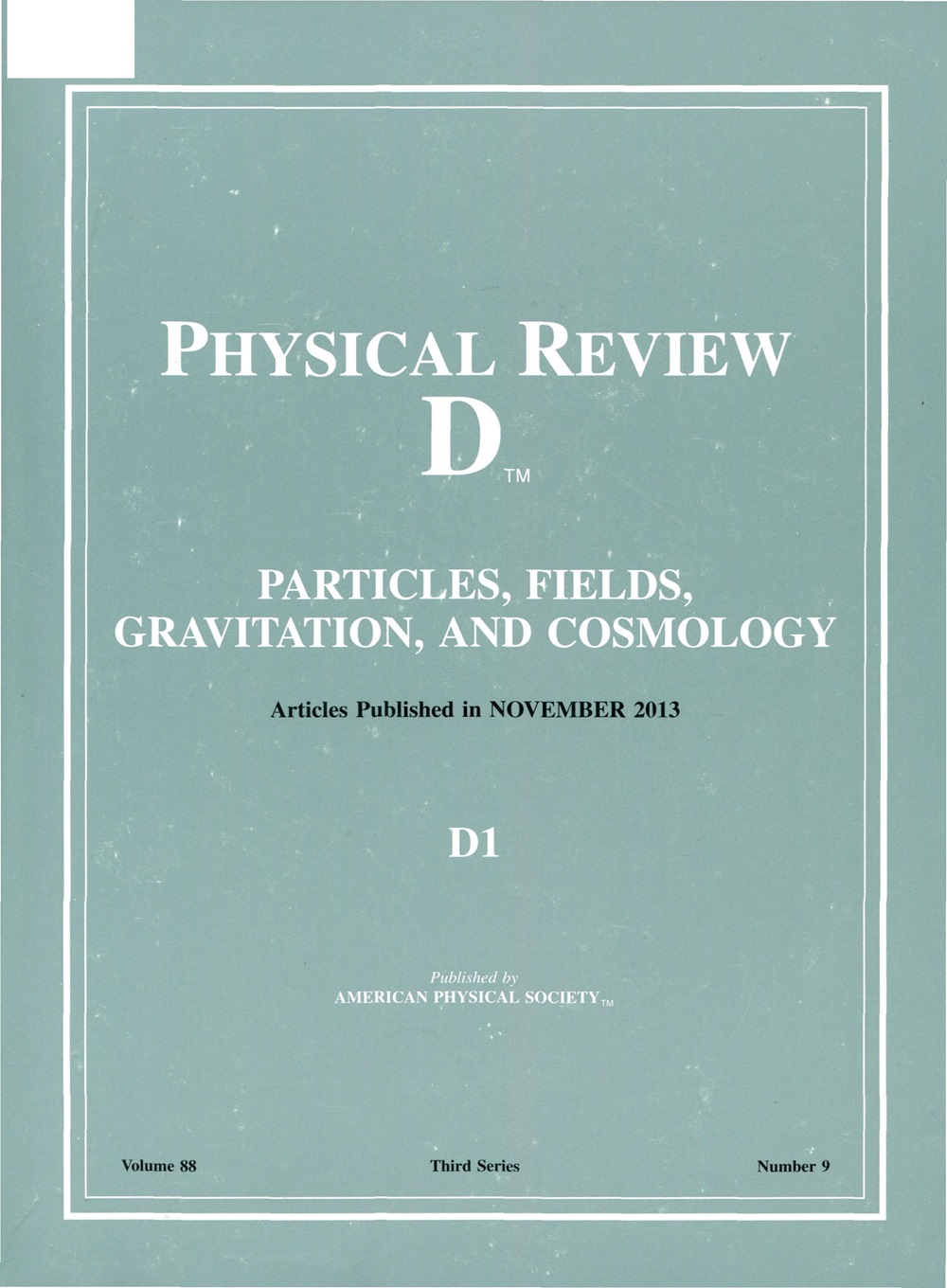Detection of gravitational wave signals from precessing binary black hole systems using convolutional neural networks
IF 5
2区 物理与天体物理
Q1 Physics and Astronomy
引用次数: 0
Abstract
Current searches for gravitational waves (GWs) from black hole binaries using the LIGO and Virgo observatories are limited to analytical models for systems with black hole spins aligned (or antialigned) with the orbital angular momentum of the binary. Detecting black hole binaries with precessing spins (spins not aligned or antialigned with the orbital angular momentum) is crucial for gaining unique astrophysical insights into the formation of these sources. Therefore, it is essential to develop a search strategy capable of identifying compact binaries with precessing spins. Aligned-spin waveform models are inadequate for detecting compact binaries with high precessing spins. While several efforts have been made to construct template banks for detecting precessing binaries using matched filtering, this approach requires many templates to cover the entire search parameter space, significantly increasing the computational cost. This work explores the detection of GW signals from binary black holes (BBH) with both aligned and precessing spins using a convolutional neural network (CNN). We frame the detection of GW signals from aligned or precessing BBH systems as a hierarchical binary classification problem. The first CNN model classifies strain data as either pure noise or noisy signals (GWs from BBH). A second CNN model then classifies the detected noisy signal data as originating from either precessing or nonprecessing (aligned/antialigned) systems. Using simulated data, the trained classifier distinguishes between noise and noisy GW signals with more than 99% accuracy. The second classifier further differentiates between aligned and highly precessing signals with around 95% accuracy. We extended our analysis to a multidetector framework by performing a coincident test. Additionally, we tested the performance of our trained architecture on data from the first three observation runs (O1, O2, and O3) of LIGO and Virgo to identify detected BBH events as either aligned or precessing.利用卷积神经网络探测前冲双黑洞系统的引力波信号
目前利用 LIGO 和室女座天文台对黑洞双星引力波(GWs)的搜索仅限于黑洞自旋与双星轨道角动量对齐(或反对齐)的系统的分析模型。探测具有前冲自旋(自旋与轨道角动量不对齐或反对齐)的黑洞双星对于获得有关这些来源形成的独特天体物理学见解至关重要。因此,制定一种能够识别具有前冲自旋的紧凑双星的搜索策略至关重要。对齐自旋波形模型不足以探测具有高前冲自旋的紧凑双星。虽然人们已经做出了一些努力,利用匹配滤波构建模板库来探测前冲双星,但这种方法需要许多模板来覆盖整个搜索参数空间,大大增加了计算成本。这项研究利用卷积神经网络(CNN)探索了如何探测自旋对齐和前处理双黑洞(BBH)发出的全球变暖信号。我们将从对齐或预处理 BBH 系统中检测 GW 信号作为一个分层二元分类问题。第一个 CNN 模型将应变数据分类为纯噪声或噪声信号(来自 BBH 的 GW)。然后,第二个 CNN 模型将检测到的噪声信号数据分类为来自预处理或非预处理(对齐/半对齐)系统的数据。通过模拟数据,训练有素的分类器区分噪声和噪声 GW 信号的准确率超过 99%。第二个分类器进一步区分了对齐信号和高度前处理信号,准确率约为 95%。我们通过进行重合测试,将我们的分析扩展到了多探测器框架。此外,我们还在 LIGO 和 Virgo 的前三次观测运行(O1、O2 和 O3)的数据上测试了我们训练有素的架构的性能,以将探测到的 BBH 事件识别为对齐或前处理。
本文章由计算机程序翻译,如有差异,请以英文原文为准。
求助全文
约1分钟内获得全文
求助全文
来源期刊

Physical Review D
物理-天文与天体物理
CiteScore
9.20
自引率
36.00%
发文量
0
审稿时长
2 months
期刊介绍:
Physical Review D (PRD) is a leading journal in elementary particle physics, field theory, gravitation, and cosmology and is one of the top-cited journals in high-energy physics.
PRD covers experimental and theoretical results in all aspects of particle physics, field theory, gravitation and cosmology, including:
Particle physics experiments,
Electroweak interactions,
Strong interactions,
Lattice field theories, lattice QCD,
Beyond the standard model physics,
Phenomenological aspects of field theory, general methods,
Gravity, cosmology, cosmic rays,
Astrophysics and astroparticle physics,
General relativity,
Formal aspects of field theory, field theory in curved space,
String theory, quantum gravity, gauge/gravity duality.
 求助内容:
求助内容: 应助结果提醒方式:
应助结果提醒方式:


